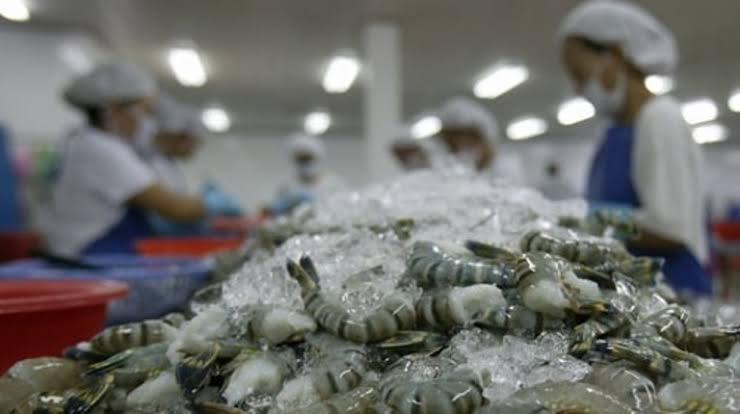Trump’s 50% Tariff on India Hits Odisha’s Seafood and Textile Sectors Hard

State Government Considers Relief Measures for Exporters
Bhubaneswar: The recent decision of former US President Donald Trump to impose a 50% tariff on Indian exports has sent shockwaves through Odisha’s economy, particularly affecting two crucial sectors—seafood exports and textiles. Both sectors have long been key contributors to the state’s export basket, and the sudden imposition of high tariffs has created uncertainty for businesses, workers, and investors.
According to Hemant Sharma, Additional Chief Secretary of Odisha’s Industries Department, the state government is seriously considering interim relief measures to protect exporters. Among the proposals being discussed are interest subsidies on working capital and other financial support to ease the burden until stability returns to global trade.
Odisha has emerged as a leading seafood exporter over the past two decades. Around 20 years ago, exports from the state were valued at just ₹300–400 crore, but by 2024–25, seafood exports had grown exponentially to ₹4,700 crore. The sector not only brings significant foreign exchange but also supports lakhs of livelihoods, with women forming more than half of the workforce.
The 50% tariff, however, has created a looming crisis. Exporters, aquaculture farmers, and workers are worried about their future as shipments to the US—Odisha’s largest market—face steep price disadvantages. While the government has urged exporters to explore alternative markets in Europe, Russia, and China, industry leaders point out that none of these regions can match the scale and reliability of the US market. As a result, both revenues and jobs could be at risk.
Kamalesh Mishra, President of the Odisha chapter of the Seafood Exporters Association of India, said exporters will present their demands during an upcoming Indian Chamber of Commerce (ICC) program. These demands are expected to focus on financial relief and assistance in market diversification.
The textile and apparel industry, another vital sector, is also facing major uncertainty. At the recently held Odisha Text 2025 Summit, textile companies pledged over ₹7,800 crore in investments to set up new units in the state. These projects were expected to diversify Odisha’s industrial base and generate large-scale employment.
However, the steep tariff imposed by the US, a key export market for garments, has raised doubts over the viability of these investments. Industry observers fear that investors might reconsider or delay projects, dealing a blow to the state government’s industrialization plans.
Odisha has ambitious plans for the textile sector, with new clusters being developed in districts such as Balangir, Keonjhar, Sambalpur, Jagatsinghpur, Ganjam, and Cuttack. The government has set a target of creating one lakh jobs in the sector by 2030.
At the Odisha Text 2025 Summit alone, 33 Memorandums of Understanding (MoUs) were signed, promising more than 53,000 jobs if the projects are implemented. A setback in this sector would not only affect employment but also derail the state’s strategy to attract diverse industries beyond mining and metals.
The twin shocks to seafood and textiles underline the vulnerabilities of export-dependent sectors when global trade policies change abruptly. While the state government is considering immediate relief measures for exporters, experts warn that long-term solutions must focus on building resilience, diversifying markets, and strengthening domestic value chains.
As Odisha navigates this crisis, policymakers face the challenge of protecting existing livelihoods while sustaining investor confidence in the state’s growth story. The outcome will shape not just the future of two critical industries but also the trajectory of Odisha’s broader economic development.









